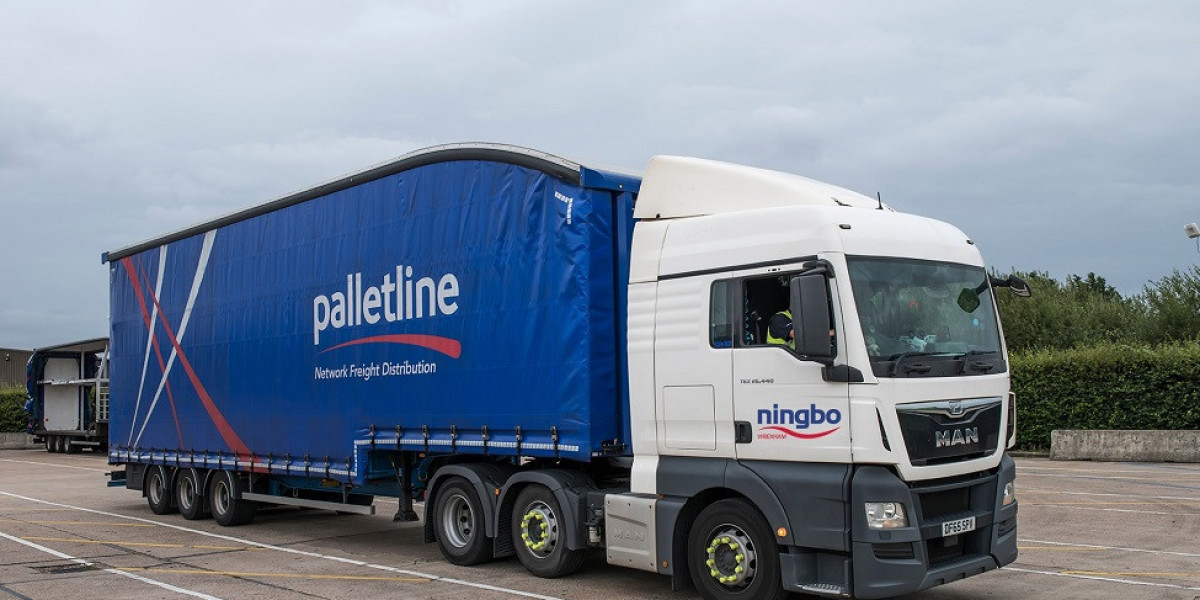In today’s fast-paced global economy, palletised distribution has become a vital component of supply chain efficiency. Businesses around the world rely on the seamless movement of goods from one point to another, and the use of pallets ensures that shipments are handled, stored, and transported safely and cost-effectively. By standardizing how goods are packed and moved, palletisation has revolutionized modern logistics, offering speed, consistency, and reduced damage rates across industries.
What Is Palletised Distribution?
Palletised distribution refers to the process of stacking goods on pallets—usually made of wood, plastic, or metal—for easier handling, storage, and transportation. This method allows forklifts and pallet jacks to move goods efficiently within warehouses and transport vehicles. By consolidating products into palletized loads, companies can move larger quantities in fewer trips, improving productivity and reducing costs.
Unlike loose or unstructured shipping methods, palletisation brings structure and stability. Whether used for food, pharmaceuticals, machinery, or retail products, palletised systems help businesses maintain consistent quality and meet delivery schedules more effectively.
The Evolution of Palletised Distribution
The origins of Palletised freight date back to the early 20th century when wooden pallets were first introduced to improve handling efficiency. The innovation of the forklift during World War II further accelerated this method’s adoption. Over time, industries began to recognize how standardised pallet dimensions and materials could streamline storage and shipping operations.
Today, palletisation has evolved with automation, smart tracking, and eco-friendly materials. Companies use advanced logistics software to track pallet movement in real time, ensuring transparency and accountability throughout the supply chain. Modern pallets are also being designed for durability, reusability, and environmental sustainability.
Key Benefits of Palletised Distribution
The rise of Palletised freight has transformed logistics by providing several essential advantages:
Enhanced Efficiency
Palletisation makes it easier to load, unload, and transport goods. Forklifts and automated guided vehicles (AGVs) can move pallets quickly, significantly reducing manual labor and turnaround time.
Reduced Damage and Loss
Goods stacked on pallets are more secure during transit. Properly wrapped and strapped loads prevent shifting, crushing, and contamination, which are common problems in unpalletized shipping.
Space Optimization
Standard-sized pallets enable uniform stacking in warehouses and transport vehicles. This optimization maximizes storage space and ensures better inventory organization.
Cost Savings
By improving handling efficiency and minimizing product damage, palletisation leads to substantial cost reductions in labor, packaging, and transportation.
Global Compatibility
The International Organization for Standardization (ISO) has defined pallet sizes used worldwide, making international trade and logistics smoother and more predictable.
The Process Behind Palletised Distribution
The Palletised freight process involves several key stages designed to maintain order and ensure timely delivery:
Pallet Preparation: Selecting the right type of pallet based on product weight, dimensions, and destination.
Loading and Wrapping: Goods are placed strategically to balance weight, then secured using stretch wrap, strapping, or shrink film.
Storage and Handling: Pallets are stored systematically within warehouses, often managed by automated systems for easy retrieval.
Transportation: Pallets are loaded onto trucks, ships, or planes for delivery to their final destination.
Tracking and Delivery: Modern logistics systems track pallet movements to provide accurate delivery updates and maintain supply chain visibility.
This structured process reduces errors and ensures that goods move efficiently from manufacturer to consumer.
Technology’s Role in Modern Palletised Distribution
The integration of technology has transformed Palletised freight into a high-precision operation. Warehouses now employ automation, robotics, and artificial intelligence to manage inventory and monitor shipment progress. Barcode scanners, RFID tags, and cloud-based platforms offer real-time insights into pallet status and location.
Automation also enhances worker safety and productivity. Robotic arms can stack and wrap pallets with accuracy, while sensors and tracking systems minimize human error. Predictive analytics help logistics managers anticipate bottlenecks and optimize routes, ensuring deliveries remain timely and efficient.
Sustainability in Palletised Distribution
Sustainability is now a key focus in Palletised freight. Companies are adopting eco-friendly practices such as using recyclable materials, reducing waste, and minimizing carbon footprints. Plastic pallets, for example, offer long-term durability and can be recycled multiple times. Meanwhile, wooden pallets are often sourced from responsibly managed forests and can be repaired and reused.
Additionally, the shift toward shared pallet pooling systems—where businesses rent pallets instead of purchasing them—reduces production waste and improves supply chain efficiency. This model promotes circular economy principles, aligning logistics with environmental responsibility.
Challenges in Palletised Distribution
While Palletised freight brings many advantages, it’s not without its challenges. Key issues include:
Standardization Across Borders: Different regions use varying pallet sizes and specifications, which can complicate international trade.
Cost of Maintenance: Damaged pallets require repair or replacement, adding to operational costs.
Storage Limitations: In small warehouses, pallet stacking height and space constraints can limit efficiency.
Environmental Concerns: Improper disposal of wooden pallets can lead to waste if recycling processes are not in place.
However, with continued innovation and the use of sustainable materials, these challenges are gradually being overcome.
The Future of Palletised Distribution
The future of Palletised freight is being shaped by automation, digital transformation, and sustainability. Smart warehouses are implementing Internet of Things (IoT) technologies to monitor temperature, humidity, and movement for sensitive goods. Artificial intelligence and robotics are expected to take over more repetitive tasks, improving accuracy and reducing operational costs.
Blockchain is also emerging as a powerful tool for enhancing transparency and trust in the logistics chain. With its ability to record immutable data, blockchain ensures that every pallet’s journey—from warehouse to destination—is accurately documented.
As e-commerce continues to expand, palletisation will play an even greater role in meeting customer expectations for speed and reliability. Companies that invest in technology-driven palletised logistics will have a competitive edge in the evolving global market.
Why Businesses Should Choose Palletised Distribution
Choosing Palletised freight means investing in consistency, speed, and professionalism. Businesses can meet customer demand more effectively, reduce operational errors, and maintain product integrity. From small enterprises to multinational corporations, this method provides scalability and adaptability to modern logistics challenges.
Moreover, the standardization that palletisation brings enables seamless collaboration between manufacturers, suppliers, and retailers, ensuring that the supply chain remains efficient from start to finish.
Conclusion
In conclusion, palletised distribution has become the backbone of global logistics, ensuring that products move safely and efficiently across borders. It embodies the principles of organization, innovation, and sustainability that define modern commerce. As industries evolve and technology advances, palletisation will continue to be the cornerstone of supply chain reliability—driving growth, reducing waste, and delivering excellence in motion.








